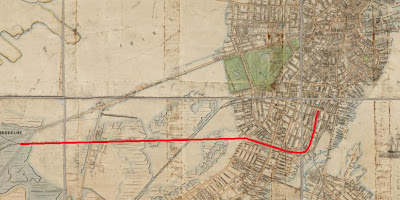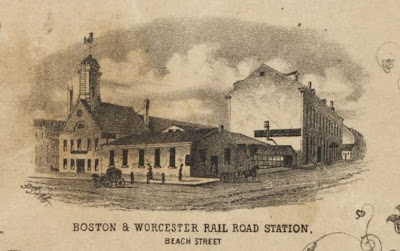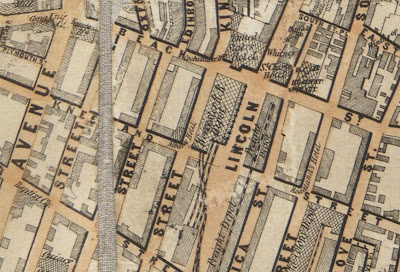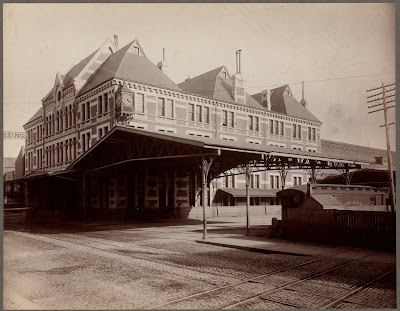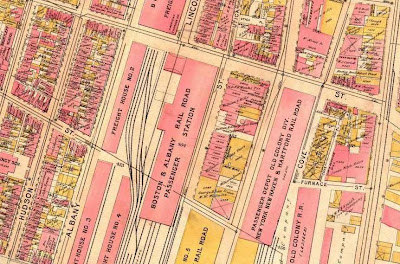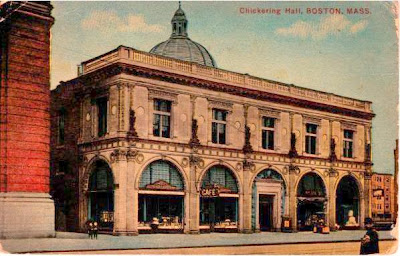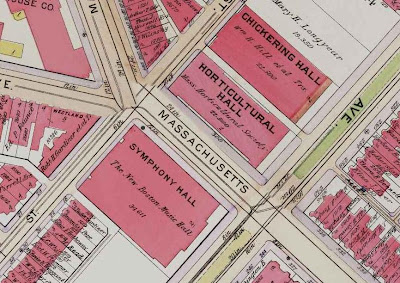 The 'New York' streets, South End, 1938 (click to enlarge for a better view).
The 'New York' streets, South End, 1938 (click to enlarge for a better view).The New York streets, so-called, were at the northeast corner of Boston's South End. From north to south, and running between Harrison avenue and Albany street, they were Seneca, Oneida, Oswego, Genesee, Rochester and Troy streets. They were laid out on filled land (formerly wharves jutting into South Bay), and named to honor the connection of the Boston and Worcester Railroad line to Albany in 1842. This district may have been specifically planned as residential housing for the arriving Irish immigrants, who were already settling in the North End and just to the north on Fort Hill.
So what happened to the New York streets? Urban renewal happened to them. The entire block of streets was removed, and became the home of the Boston Herald Traveler plant. This was actually the first urban renewal project in Boston, predating the destruction of the West End. Of course, 'urban renewal' was the term used, but slum clearance was the intention. The neighborhood was an integrated multi-ethnic district of working poor/working class people who had no one at City Hall to speak for them, and such populations had not yet learned to speak for themselves. The city wanted to keep the Herald in Boston, so it found room for them on the backs of a population who couldn't fight back. Somewhere in Boston, there should be a Hall of Shame for the people who did these things.
